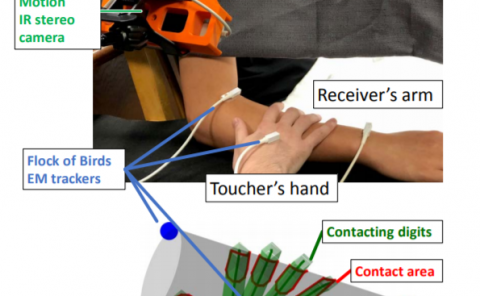The Impact of Avatar Personalization and Immersion on Virtual Body Ownership, Presence, And Emotional Response
PubDate: January 2018
Teams: Bielefeld University;University of Würzburg
Writers: Thomas Waltemate; Dominik Gall; Daniel Roth; Mario Botsch; Marc Erich Latoschik

Abstract
This article reports the impact of the degree of personalization and individualization of users’ avatars as well as the impact of the degree of immersion on typical psychophysical factors in embodied Virtual Environments. We investigated if and how virtual body ownership (including agency), presence, and emotional response are influenced depending on the specific look of users’ avatars, which varied between (1) a generic hand-modeled version, (2) a generic scanned version, and (3) an individualized scanned version. The latter two were created using a state-of-the-art photogrammetry method providing a fast 3D-scan and post-process workflow. Users encountered their avatars in a virtual mirror metaphor using two VR setups that provided a varying degree of immersion, (a) a large screen surround projection (L-shape part of a CAVE) and (b) a head-mounted display (HMD). We found several significant as well as a number of notable effects. First, personalized avatars significantly increase body ownership, presence, and dominance compared to their generic counterparts, even if the latter were generated by the same photogrammetry process and hence could be valued as equal in terms of the degree of realism and graphical quality. Second, the degree of immersion significantly increases the body ownership, agency, as well as the feeling of presence. These results substantiate the value of personalized avatars resembling users’ real-world appearances as well as the value of the deployed scanning process to generate avatars for VR-setups where the effect strength might be substantial, e.g., in social Virtual Reality (VR) or in medical VR-based therapies relying on embodied interfaces. Additionally, our results also strengthen the value of fully immersive setups which, today, are accessible for a variety of applications due to the widely available consumer HMDs.


